fawadbutt
Member level 3
- Joined
- Oct 29, 2010
- Messages
- 61
- Helped
- 4
- Reputation
- 8
- Reaction score
- 4
- Trophy points
- 1,288
- Location
- Lahore, Pakistan, Pakistan
- Activity points
- 1,754
Hi,
I try to drive electromagnetic contactor with esp32 controller and display some data on JHD 2x16 i2c (pcf8574)lcd. An d 2 button for some function.
For this i schematic and made pcb.
But issue is that when electromagnetic contactor on or off . My circuit is disturb.moslty lcd start showing garbage and some time my esp32 controller hang.
For this try so many thing.
1- For connect Pcb board to i2c module use shielded wire.
2- add 0.1uf and 1 uf capacitor near to lcd and controller supply pins.
3- add 0.1 uf capacitor every input and output pins.
4- use 5v to 5v dc to dc isolated module for separate esp32 and lcd supply.
5- use copper pour hatch ground all over tha pcb and attach to external ground.
6- i use ferrid core ring in input and output wire.
But noise still come in board..
For electromagnetic contactor i drive 5 volt relay which drive 220 volt relay who operate contactor.
Kindly guide me what i doing wrong .
I think i need to design pcb again. For this give suggestions.
I try to drive electromagnetic contactor with esp32 controller and display some data on JHD 2x16 i2c (pcf8574)lcd. An d 2 button for some function.
For this i schematic and made pcb.
But issue is that when electromagnetic contactor on or off . My circuit is disturb.moslty lcd start showing garbage and some time my esp32 controller hang.
For this try so many thing.
1- For connect Pcb board to i2c module use shielded wire.
2- add 0.1uf and 1 uf capacitor near to lcd and controller supply pins.
3- add 0.1 uf capacitor every input and output pins.
4- use 5v to 5v dc to dc isolated module for separate esp32 and lcd supply.
5- use copper pour hatch ground all over tha pcb and attach to external ground.
6- i use ferrid core ring in input and output wire.
But noise still come in board..
For electromagnetic contactor i drive 5 volt relay which drive 220 volt relay who operate contactor.
Kindly guide me what i doing wrong .
I think i need to design pcb again. For this give suggestions.
Attachments
-
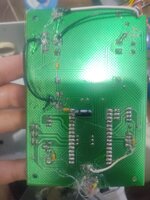 IMG_20231029_180202.jpg1.3 MB · Views: 81
IMG_20231029_180202.jpg1.3 MB · Views: 81 -
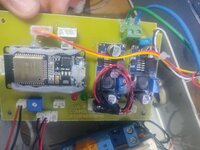 IMG_20231029_180157.jpg1.4 MB · Views: 65
IMG_20231029_180157.jpg1.4 MB · Views: 65 -
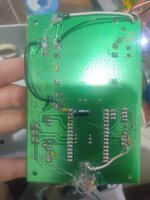 IMG_20231029_180204.jpg1.3 MB · Views: 79
IMG_20231029_180204.jpg1.3 MB · Views: 79 -
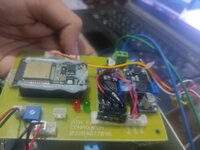 IMG_20231029_180211.jpg826.5 KB · Views: 56
IMG_20231029_180211.jpg826.5 KB · Views: 56 -
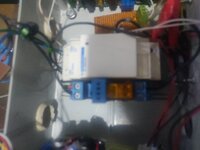 IMG_20231029_180256.jpg4.3 MB · Views: 70
IMG_20231029_180256.jpg4.3 MB · Views: 70 -
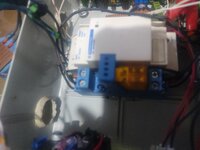 IMG_20231029_180251.jpg4.2 MB · Views: 67
IMG_20231029_180251.jpg4.2 MB · Views: 67 -
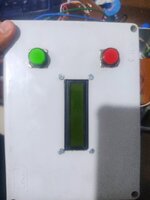 IMG_20231029_180310.jpg1.5 MB · Views: 70
IMG_20231029_180310.jpg1.5 MB · Views: 70